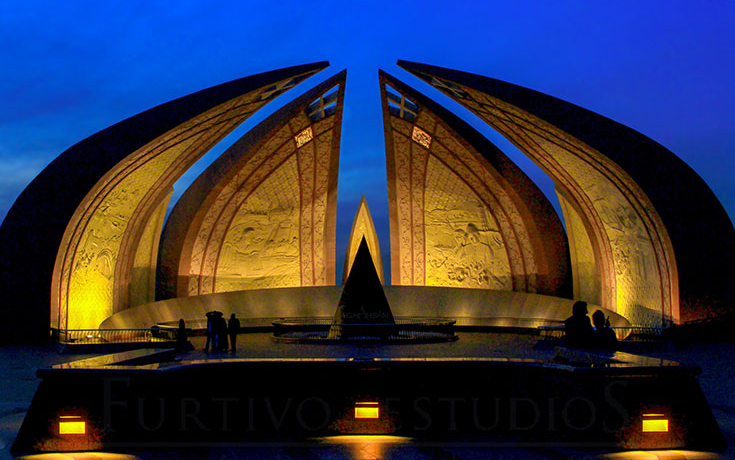The Notre-Dame of Bangui Cathedral, situated in the heart of the Central African Republic, stands as Central African Republic National Monument of immense historical, cultural, and religious significance. This majestic cathedral, with its awe-inspiring architecture and profound symbolism, represents an important part of the country’s identity. In this article, we will explore the rich history, architectural beauty, cultural importance, and various other aspects of the Notre-Dame of Bangui Cathedral.
The Notre-Dame of Bangui Cathedral, also known as Cathédrale Notre-Dame de l’Immaculée Conception, is located in the capital city of the Central African Republic, Bangui. This iconic structure has been a prominent landmark since its construction and has witnessed the country’s triumphs and tribulations throughout its history.
Historical Significance of the Central African Republic National Monument
The history of the Notre-Dame of Bangui Cathedral dates back to the colonial era when the French influence was prevalent in the region. Its construction began in 1898 and was completed in 1950. The cathedral has witnessed significant historical events, including the country’s struggle for independence and subsequent political developments.
Architectural Beauty and Design
The architectural splendor of the Notre-Dame of Bangui Cathedral is truly remarkable. The cathedral showcases a blend of European and Central African architectural styles. Its grand façade, adorned with intricate carvings and stained glass windows, is a testament to the craftsmanship of the artisans involved in its construction.
Cultural Importance and Symbolism
The Notre-Dame of Bangui Cathedral holds deep cultural importance for the people of the Central African Republic. It serves as a symbol of unity, faith, and resilience. The cathedral’s architectural elements and religious artifacts reflect the country’s rich cultural heritage and traditions.
Restoration Efforts and Preservation of Central African Republic National Monument
Over the years, the Notre-Dame of Bangui Cathedral has faced challenges due to natural disasters and political unrest. However, various restoration efforts have been undertaken to preserve its historical and cultural significance. The ongoing preservation initiatives aim to maintain the cathedral’s original glory for future generations to admire.
Tourism and Visitor Experience
The Notre-Dame of Bangui Cathedral attracts a significant number of tourists and visitors from around the world. Its architectural grandeur, combined with its historical and cultural significance, provides an enriching experience for those who explore its premises. Visitors can marvel at the cathedral’s interior, attend religious services, and learn about the Central African Republic’s unique heritage.
Impact on the Local Community
The Notre-Dame of Bangui Cathedral plays a vital role in the lives of the local community. It serves as a gathering place for religious ceremonies, social events, and community celebrations. The cathedral’s presence fosters a sense of belonging and pride among the residents of Bangui and the surrounding areas.
Contributions to the Central African Republic’s Identity
As a national monument, the Notre-Dame of Bangui Cathedral contributes significantly to the identity of the Central African Republic. It serves as a symbol of national unity, resilience, and cultural diversity. The cathedral’s prominence in the cityscape reinforces the country’s historical and cultural legacy.
The Role of Notre-Dame of Bangui Cathedral in Religious Life
The Notre-Dame of Bangui Cathedral holds immense religious significance for the Christian community in the Central African Republic. It serves as a place of worship and spiritual solace, providing a sacred space for religious ceremonies, weddings, and baptisms. The cathedral’s serene ambiance and architectural magnificence enhance the spiritual experience of its congregants.
Notable Events and Celebrations
The Notre-Dame of Bangui Cathedral has been a witness to numerous notable events and celebrations throughout its existence. From religious festivals and national holidays to state ceremonies, the cathedral has played a pivotal role in commemorating and uniting the Central African Republic’s people during important occasions.
Challenges Faced by the Central African Republic National Monument
Despite its historical significance, the Notre-Dame of Bangui Cathedral has faced several challenges. Natural disasters, such as fires and earthquakes, along with political instability, have threatened its existence. However, the determination of the local community and preservation efforts have ensured its survival.
Future Plans and Sustainability
To secure the future of the Notre-Dame of Bangui Cathedral, plans are in place to continue the restoration and preservation efforts. These initiatives aim to safeguard the cathedral’s architectural integrity and enhance its accessibility to visitors. The sustainability of the cathedral’s operations and maintenance remains a priority to ensure its longevity.
Conclusion
The Notre-Dame of Bangui Cathedral stands as a remarkable testament to the Central African Republic’s history, culture, and faith. Its architectural beauty, cultural significance, and religious importance make it a national monument of great pride. Despite the challenges it has faced, the cathedral continues to inspire awe and unite people from all walks of life. The preservation and restoration efforts ensure that future generations can appreciate and cherish this iconic symbol of the Central African Republic’s heritage.
FAQs
Q1: Can visitors access the interior of the Notre-Dame of Bangui Cathedral?
A1: Yes, visitors can access the interior of the Notre-Dame of Bangui Cathedral. The cathedral welcomes tourists and locals alike to explore its majestic interior, admire its architectural features, and attend religious services.
Q2: Are there any specific dress codes or rules for visiting the cathedral?
A2: While there isn’t a strict dress code, it is advisable to dress modestly when visiting the Notre-Dame of Bangui Cathedral out of respect for its religious significance. It is recommended to avoid wearing revealing clothing and to dress in a manner that shows respect for the sacredness of the place.
Q3: Is the Notre-Dame of Bangui Cathedral open to people of all faiths?
A3: Yes, the Notre-Dame of Bangui Cathedral is open to people of all faiths. While it holds great significance for the Christian community, the cathedral welcomes visitors from diverse backgrounds who wish to explore its historical, cultural, and architectural aspects.
Q4: Are there any guided tours available for visitors?
A4: Yes, guided tours are available for visitors who want a more immersive and informative experience at the Notre-Dame of Bangui Cathedral. These tours provide insights into the cathedral’s history, architecture, and cultural importance, enriching the visitor’s understanding of this remarkable monument.
Q5: How can one support the preservation efforts of the Notre-Dame of Bangui Cathedral?
A5: If you wish to support the preservation efforts of the Notre-Dame of Bangui Cathedral, you can consider making a donation to the relevant organizations involved in its maintenance and restoration. Additionally, spreading awareness about the cathedral’s cultural significance and encouraging responsible tourism can also contribute to its preservation.
References
- “Notre-Dame of Bangui Cathedral” – UNESCO World Heritage Centre: https://whc.unesco.org/en/tentativelists/5809/
- “Bangui Cathedral” – Central African Republic Tourism: https://www.centralafricanrepublic.travel/bangui-cathedral/
- “Central African Republic: Notre-Dame of Bangui Cathedral” – Atlas Obscura: https://www.atlasobscura.com/places/notre-dame-of-bangui-cathedral



Pingback: Notre Dame Cathedral, Bangui: A Local Iteration of French Architecture in Central Africa – Architectsradar